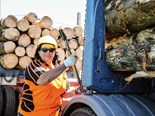Cover Story: 0800 GRABIT
It’s quick and tidy, efficient, manoeuvrable, and cost-effective, but most of all, it’s incredibly work-safe, and it’s 0800 GRABIT
Stephen Sparnon and his wife Jane, owners of the company, were on an overseas trip about four years ago when Stephen saw lots of grab trucks in action.
However, the units he saw there, had small-capacity bins, but he could see a way to improve upon the method when he got back to home to New Zealand.
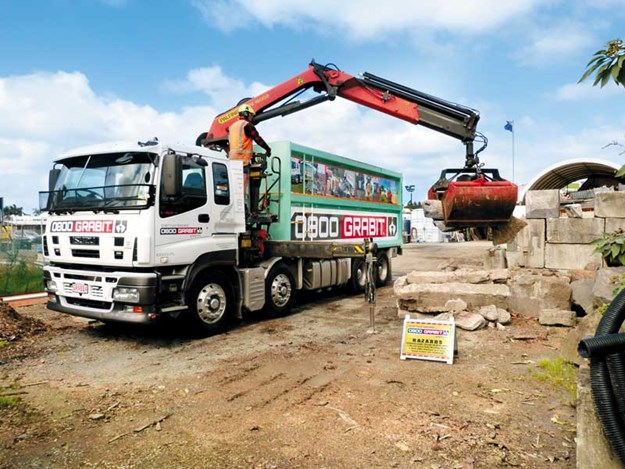 |
|
Large concrete slabs are removed with ease
|
By taking all the things he liked about the grab truck concept and adding a few ideas of his own, he designed an all-in-one moving machine with a 30 cubic metre capacity tipping bin.
When taking a first look at the 0.65 cubic metre clamshell at the end of the Palfinger truck crane, it’s easy to see that the set up would make short work of picking up a pile of anything from green waste to something a little heavier like rocks or concrete slabs, but it isn’t until you see the rig in action that you start to get an idea of what it’s really capable of.
Fully extended, the truck’s crane has a reach of 10 metres and a lifting capacity of one tonne at full extension.
This, coupled with an ability to rotate the head 360 degrees in either direction, allows the operator to place objects precisely in the correct spot, even when the item being placed has an irregular shape.
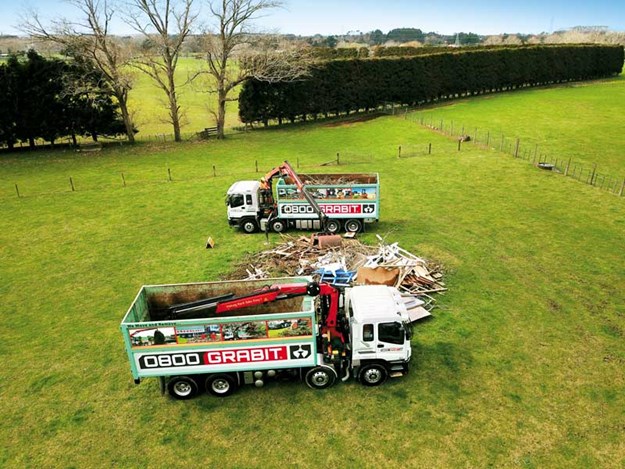 |
|
One waste pile, two trucks equals a job cleared in half the time
|
An added benefit of the 360-degree rotation is that placement of items can easily be made with just one set up of the base vehicle, saving not only time and money but also minimising the likelihood of any damage being caused to the item itself or to the immediate environment.
The two trucks currently in the 0800 GRABIT fleet are a 2016 400hp Isuzu Giga CYJ fitted with a Palfinger PK 17.001 crane, which Stephen operates, and a 2014 460hp Isuzu Giga CYJ with a PK 16.002 crane operated by George Whyte, Stephen’s right-hand-man.
The guys say they particularly like their Isuzu trucks with their quiet-running engines and 16-speed automatic transmissions.
Although the truck’s cranes can be set up to be operated by wireless remote control, Stephen says that George and he prefer to operate their machines from the platform of the truck, this method they say, gives them an unrestricted view of the entire operation from a completely safe vantage point, several metres away from suspended loads.
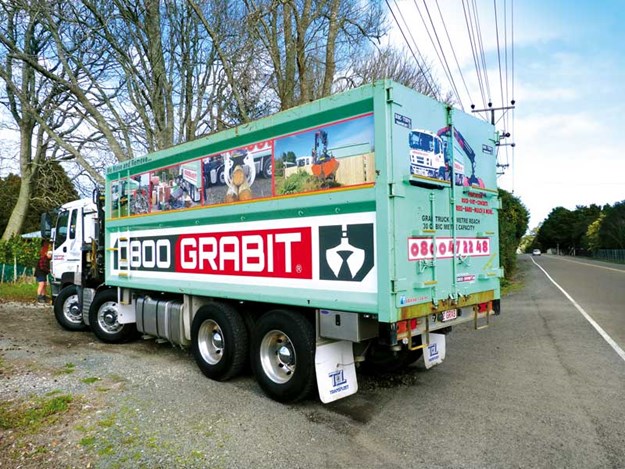 |
|
0800 GRABIT, an easy phone number to remember
|
Both trucks have cranes of the same lifting capacity and are fitted with 30 cube tipping bins built by Transfleet Trailers and are constructed using Roc-Tuff steel, keeping the trucks looking sharp, even after carrying countless loads of rocks and broken concrete slabs.
While Stephen says there are several variations of clamshell that can be fitted to a truck crane, George and he tend to stick with using a 650-litre grab for the likes of green waste, palm tree removal, along with rocks and concrete, but find it’s best to use a log grab when picking up cylindrical loads.
Use of these versatile grab trucks, however, isn’t confined to placement and collection of those previously-mentioned articles, as there are many other applications in the machines’ arsenal than one at first might imagine.
The 0800 GRABIT guys can keep you entertained for quite some time with examples of some of the most unusual jobs they’ve been asked to carry out, like a house demolition, for example.
 |
|
The grab showing off its versatility
|
The owners of the Mt Albert property wanted to retain the original front-portion of the house for the purpose of aesthetics but needed to remove the back half before a rebuild could commence.
Stephen’s grab truck proved to be the most cost-effective piece of machinery for the job at hand, as once the builder had made a cut in the appropriate places, Stephen was able to delicately pick the redundant part of the house apart and load the remains directly into his truck in one movement.
This eliminated the need for a separate waste bin taking up valuable space on the demolition site, along with negating the requirement for a plethora of other machinery and workforce all vying for space in what was already a relatively tight working area.
With health and safety at the forefront of everybody’s mind these days, it doesn’t take a lot of figuring out to see that a one-man and one-machine operation poses a whole lot less potential for damage or injury to occur.
The quantity survey people must have had a whole lot less to organise on that particular job as well.
Hard jobs made easy
 |
|
30m3 tipping bins can remove a lot of waste in one load
|
It would appear that no two days are ever the same in the grab truck business, the following of which are two prime examples.
One job that George related certainly wouldn’t have been for the faint-of-heart—in fact, it was one that Stephen himself was pleased he wasn’t rostered-on to do that particular day—involved removing a deceased cow from a lake in the middle of winter.
George, who is a retired farmer, reckoned that even for him that was probably the most unpleasant job he’s had to perform as a grab truck operator, as he first had to wade out into the freezing-cold lake, place a strop around the corpse, and haul it near the truck before he was able to load it into the bin.
Stephen, on the other hand, was asked to carry out a live animal transportation. It was a large bull that had escaped from his paddock, was roaming the streets, and had to be tranquilised before he could be taken back home.
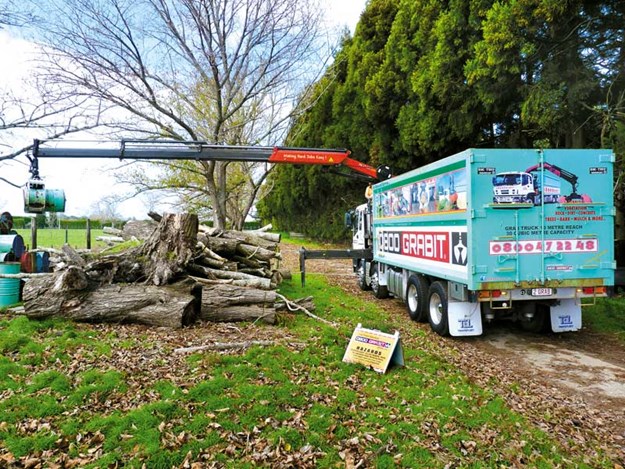 |
|
The crane can lift 1000kg at a 10m reach
|
The comatose bull was cradled into the bin of the truck, under the supervision of a vet, and transported a distance of a few kilometres back to his paddock before being gently lifted from the truck and placed on the ground.
The guys say that there’s almost no limit to the jobs they can perform with a grab truck, with perhaps the only restriction being overhead objects such as powerlines and sites where vehicle access is restricted to off-road traffic.
When asked about the limitations of carrying out site clean-ups, Stephen says that while George and he get plenty of practice at leaving sites pristinely clean during the course of their everyday work, he also practises at home for the odd performance at trade events, where he puts on a show of making a hotdog, complete with squeezed-on mustard and tomato sauce, or if he’s feeling really daring, making a hamburger and topping it off with a flag secured with a toothpick.
It’s true. Check out the video.
For more information, call 021 672 469/0800 472 248/09 412 7169 or e-mail info@grabit.kiwi.
Keep up to date in the industry by signing up to Deals on Wheels' free newsletter or liking us on Facebook.






.jpg)


.jpg)



